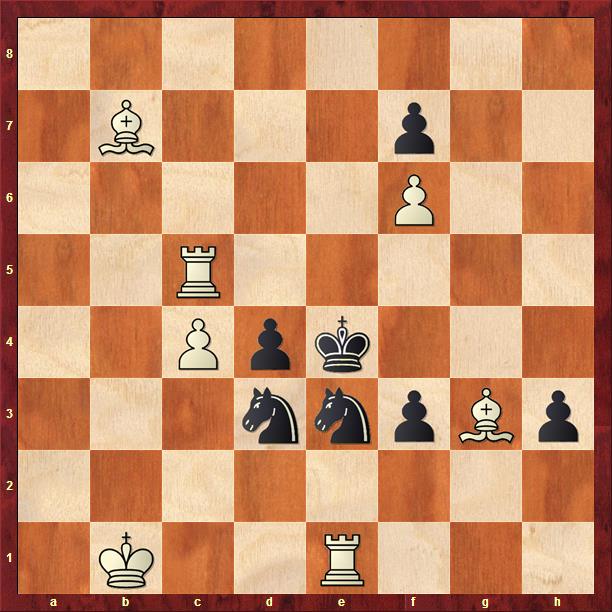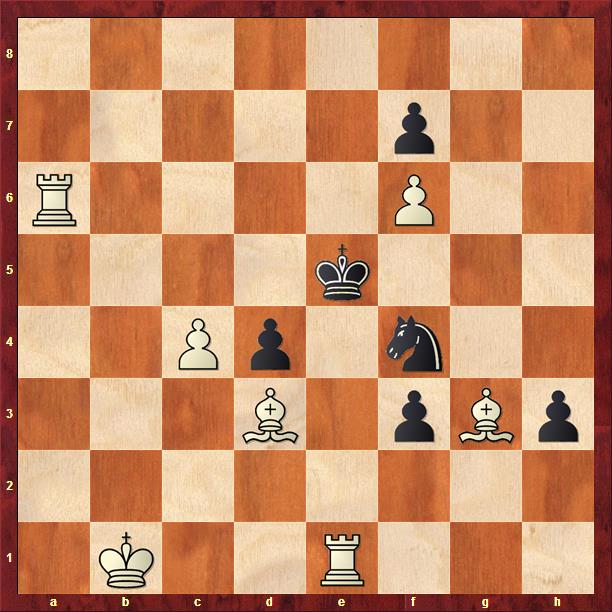This week we shall continue our look at helpmates. The problem below was composed by Zivko Janevski in 2011. It calls for helpmate in two, with three solutions:

Before diving in, let's review how helpmates work. In defiance of normal chess logic, white and black will be cooperating to contrive a position in which black is checkmated. The convention is that black moves first, so that, from the diagram, we are looking for a sequence of the form: Black moves, White moves, Black moves, White gives mate. Even though black and white are cooperating, normal chess rules apply. It is fine for either white or black to be put in check during the solution, but they must immediately get out of check on their next move.
In most problem genres, multiple solutions are considered unacceptable. But in short helpmates they are the norm. The catch is that the solutions must be thematically related in some way.
No let's have a look at the solutions. The first one is (remember that black moves first!) 1. Ne3 Rc6 2. Ke4 Rc5 mate, leading to this position:

Very nice. The black king can not move to the mating square e4 until both white and black close the lines of white pieces defending that square. The final position is a pin mate.
This pattern is repeated twice more. The second solution is 1. N5f4 Be4 2. Ke5 Bd3 mate, leading to this:

This time two white lines to e5 had to be blocked, and note that we have another pin mate. The third solution is 1. Nb6 Be5 2. Ke6 Bc8 mate:

Two white lines to e6 are closed, with yet another pin mate.
Impressive thematic unity with impressive economy. When composing helpmates, it can be very difficult to eliminate cooks. With white and black cooperating, all sorts of crazy mates become possible. As a result, helpmates often have heavy construction, with many units on the board strictly as cookstoppers. A related problem are units that are only needed in one solution. That is certainly not the case in this elegant problem. The only blemish I see is that in the first two solutions, white creates and fires a battery, while that is absent in the third solution. Oh well. This is still a great problem, and well-deserving of the first prize it received. Zivko Janevski is one of the top modern composers.
If you browse through the chess problem magazines (and who doesn't?) you'll find that helpmates are the most popular genre. For composers, there just seem to be so many possible themes that it is easier to achieve originality here than in other genres. For solvers, there is the satisfaction of knowing that you can be absolutely certain when you have solved the problems.
On the other hand, some, more classically trained, composers tend to sneer at helpmates, viewing them as the problem worlds version of candy. Tasty and amusing, but not to be confused with the serious researches of the top direct mate composers.
Personally, I am a great fan of helpmates. And in writing these posts I've discovered another reason to like them. Helpmates are way easier to blog about than other genres! See you next week!
- Log in to post comments

I hope I'm not the only one that has inadvertently played a help mate over the board. :)
Another nice one. I'm just a bit confused as to your comment as to creating and firing a battery ( I'm used to thinking of this term as referring to, you know, a couple of rooks ganging up on a desperately-defended pawn). I guess in problems maybe it means blocking your own threatening piece then releasing?
Yes, in problem jargon a battery is when one piece blocks another of the same color. The idea is that the front piece can move, discovering an attack or a check from the rear piece. In the first solution, the white move Rc6 creates a battery with the rook as front piece and the bishop as rear piece. In the second solution the white move Be4 creates a battery with the bishop as the front piece and the rook as the rear piece.
But in the third solution? No battery. So sad.